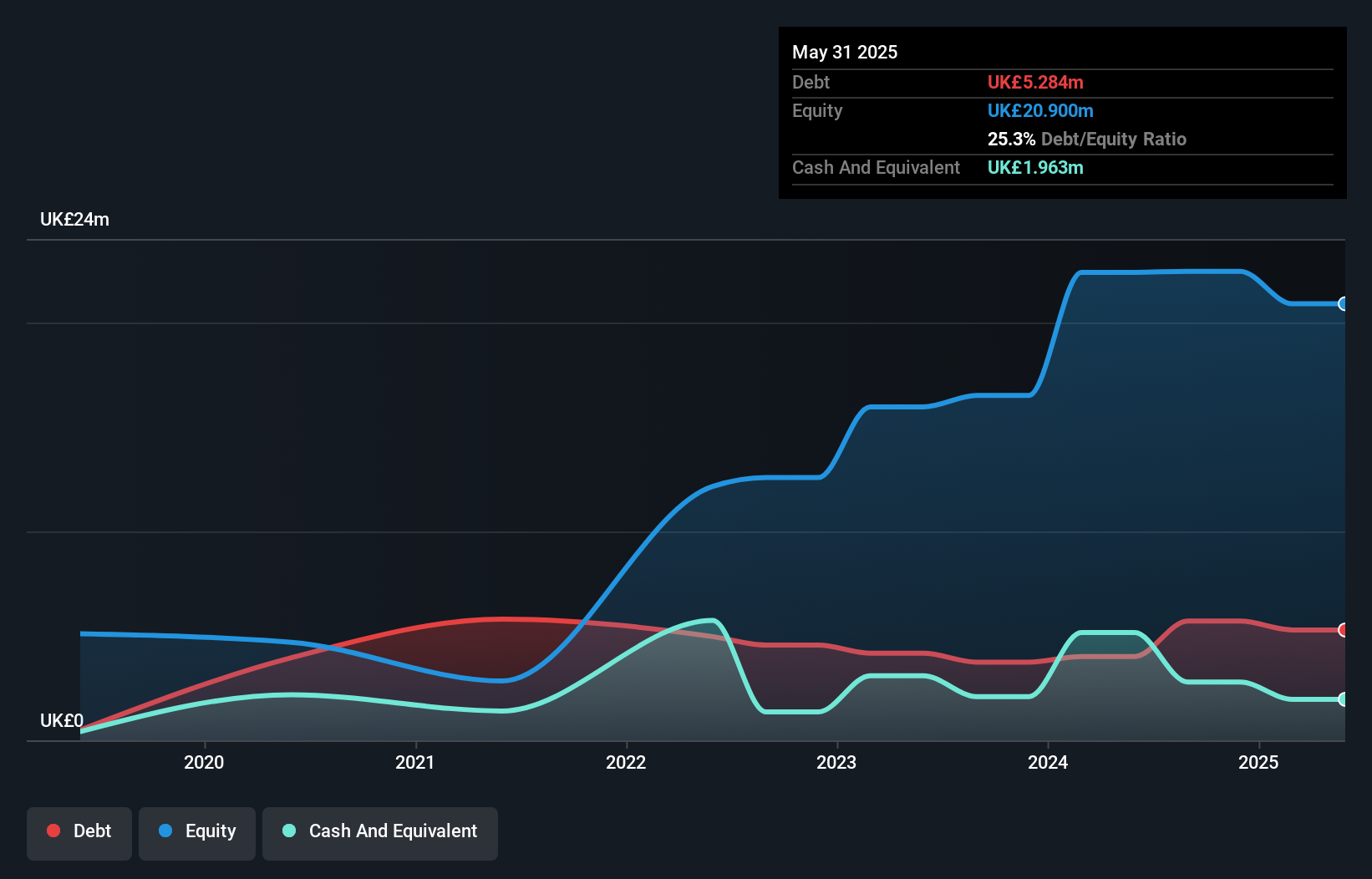Howard Marks put it nicely when he said that, rather than worrying about share price volatility, 'The possibility of permanent loss is the risk I worry about... and every practical investor I know worries about.' When we think about how risky a company is, we always like to look at its use of debt, since debt overload can lead to ruin. We can see that EnSilica plc (LON:ENSI) does use debt in its business. But should shareholders be worried about its use of debt?
When Is Debt Dangerous?
Generally speaking, debt only becomes a real problem when a company can't easily pay it off, either by raising capital or with its own cash flow. In the worst case scenario, a company can go bankrupt if it cannot pay its creditors. While that is not too common, we often do see indebted companies permanently diluting shareholders because lenders force them to raise capital at a distressed price. By replacing dilution, though, debt can be an extremely good tool for businesses that need capital to invest in growth at high rates of return. The first thing to do when considering how much debt a business uses is to look at its cash and debt together.
What Is EnSilica's Net Debt?
As you can see below, at the end of May 2025, EnSilica had UK£5.28m of debt, up from UK£4.02m a year ago. Click the image for more detail. However, it also had UK£1.96m in cash, and so its net debt is UK£3.32m.

How Strong Is EnSilica's Balance Sheet?
According to the last reported balance sheet, EnSilica had liabilities of UK£14.9m due within 12 months, and liabilities of UK£4.25m due beyond 12 months. On the other hand, it had cash of UK£1.96m and UK£9.86m worth of receivables due within a year. So its liabilities outweigh the sum of its cash and (near-term) receivables by UK£7.35m.
Given EnSilica has a market capitalization of UK£38.2m, it's hard to believe these liabilities pose much threat. But there are sufficient liabilities that we would certainly recommend shareholders continue to monitor the balance sheet, going forward. The balance sheet is clearly the area to focus on when you are analysing debt. But it is future earnings, more than anything, that will determine EnSilica's ability to maintain a healthy balance sheet going forward. So if you want to see what the professionals think, you might find this free report on analyst profit forecasts to be interesting.
View our latest analysis for EnSilica
In the last year EnSilica had a loss before interest and tax, and actually shrunk its revenue by 28%, to UK£18m. To be frank that doesn't bode well.
Caveat Emptor
Not only did EnSilica's revenue slip over the last twelve months, but it also produced negative earnings before interest and tax (EBIT). To be specific the EBIT loss came in at UK£1.7m. When we look at that and recall the liabilities on its balance sheet, relative to cash, it seems unwise to us for the company to have any debt. So we think its balance sheet is a little strained, though not beyond repair. However, it doesn't help that it burned through UK£4.4m of cash over the last year. So in short it's a really risky stock. There's no doubt that we learn most about debt from the balance sheet. However, not all investment risk resides within the balance sheet - far from it. For example EnSilica has 3 warning signs (and 1 which is potentially serious) we think you should know about.
If, after all that, you're more interested in a fast growing company with a rock-solid balance sheet, then check out our list of net cash growth stocks without delay.
Valuation is complex, but we're here to simplify it.
Discover if EnSilica might be undervalued or overvalued with our detailed analysis, featuring fair value estimates, potential risks, dividends, insider trades, and its financial condition.
Access Free AnalysisHave feedback on this article? Concerned about the content? Get in touch with us directly. Alternatively, email editorial-team (at) simplywallst.com.
This article by Simply Wall St is general in nature. We provide commentary based on historical data and analyst forecasts only using an unbiased methodology and our articles are not intended to be financial advice. It does not constitute a recommendation to buy or sell any stock, and does not take account of your objectives, or your financial situation. We aim to bring you long-term focused analysis driven by fundamental data. Note that our analysis may not factor in the latest price-sensitive company announcements or qualitative material. Simply Wall St has no position in any stocks mentioned.
About AIM:ENSI
EnSilica
Engages in the design and supply of complex mixed signal application specific integrated circuit chips in the United Kingdom, Rest of Europe, and internationally.
Adequate balance sheet and fair value.
Market Insights
Community Narratives



